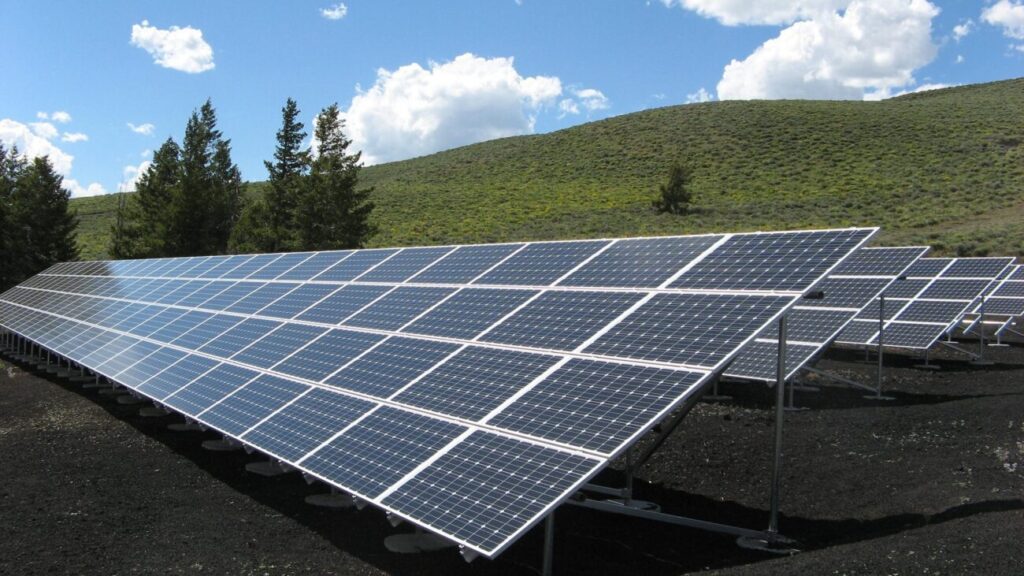What is Solar Panel Efficiency and Why Does it Matter?
Solar energy is abundant, sustainable, and emits no greenhouse gases, making it an attractive option for both residential and commercial use.
However, the effectiveness of solar panels in converting sunlight into electricity remains a critical factor in their widespread adoption.
Efficiency is a key element of solar panel technology, as it determines the amount of sunlight that can be converted into usable electricity. The higher the efficiency rating, the more power is generated from a given surface area of solar panels. As such, manufacturers are continuously improving their designs to maximise efficiency and reduce costs for consumers.

What does solar panel efficiency mean?
In simple terms, solar panel efficiency is the measure of how effectively a solar panel can convert sunlight into usable electricity. It is typically expressed as a percentage and indicates the amount of energy that can be produced from a certain amount of sunlight. The higher the efficiency rating, the more power output you can expect from your solar panels.
Efficiency is an important factor to consider when choosing solar panels for your home or business. It determines the size and number of panels needed to generate enough electricity to meet your needs. High-efficiency panels are ideal if you have limited space or want to maximise energy production in areas with lower levels of sunlight.
Factors that affect solar panel efficiency include temperature, shading, and module design. It’s important to work with an experienced installer who can help you choose the right type of panels for your specific situation and ensure that they are installed in a way that maximises their performance. By understanding what solar panel efficiency means, you can make informed decisions about your investment in renewable energy technology.
How Efficiency Is Measured?
Efficiency is a crucial element in the performance of solar panels. It determines how much energy a panel can produce relative to the amount of sunlight it receives. There are several methods used to measure efficiency, and they differ depending on the type of solar cells being evaluated.
One common method for measuring efficiency is the photovoltaic (PV) conversion rate. This measures how much electrical energy a solar cell generates per unit area when exposed to sunlight. Another method involves evaluating the fill factor, which measures how well a cell converts light into electricity by examining its voltage and current output about its maximum power point.
Additionally, researchers may use external quantum efficiency (EQE) as another method for assessing cell performance. EQE measures how many photons that hit the surface of a cell are converted into electric charges, offering insight into where energy losses may occur within a system.
Factors Affecting Efficiency
Solar panel efficiency depends greatly on the quality of sunlight that reaches the photovoltaic cells. The amount of solar radiation that reaches the Earth’s surface depends on geographical position and changes in seasons and weather patterns. India, for example, receives an average annual solar insolation of 4–7 kWh/m², which enables higher output in regions like Rajasthan compared to coastal zones with frequent cloud cover. The different operating temperatures of solar cells explain why two identical panels generate different amounts of power when installed together.
Temperature plays a major role as well. Most panels perform best at around 25°C, yet many regions record rooftop temperatures above 45°C during peak summer. The power output decreases when the electrical system experiences voltage drops because of elevated temperatures. Manufacturers list a temperature coefficient to show how much output drops for every degree increase. A panel with a coefficient of –0.35%/°C will lose roughly 7% efficiency when the temperature rises by 20°C. These numbers help homeowners and businesses make informed choices that suit local climate conditions.
The long-term performance of a solar system depends on the installation methods which were used during its setup. The power output of solar panels decreases by more than 20% when trees or buildings create shading even if only a small portion of the panel gets shaded. The correct tilt angle and orientation need to match the latitude of the area for optimal sunlight collection. The performance of solar panels decreases by 5–15% when dust builds up on their surfaces according to research about uncleaned panels. These factors highlight why good site assessment, correct mounting, and regular maintenance ensure stronger returns from a solar investment.
Also Read: Solar Energy: The Pros and Cons You Need to Know
Techniques for increasing solar panel efficiency
Efficiency is an important element in solar panel performance, as it directly influences the amount of energy generated from sunshine. One way to enhance efficiency is to employ high-efficiency solar cells that have higher conversion rates than standard cells. These advanced solar cells can attain an efficiency of up to 24%, compared to 15-20% for ordinary panels.
Another strategy involves altering the angle and direction of the solar panels to maximise exposure to sunlight. This can be achieved by correct installation and tracking devices that alter the angle of the panels throughout the day based on solar movement. Additionally, regular maintenance such as removing dust and dirt from panel surfaces can boost efficiency by letting more light reach the cells.
Overall, improving efficiency in solar panels requires a combination of advanced technology and proper installation and maintenance practices. By implementing these techniques, users can generate more energy from their systems while reducing their environmental impact.

